 W
WBuilding insulation materials are the building materials which form the thermal envelope of a building or otherwise reduce heat transfer.
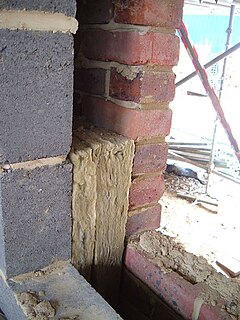 W
WA cavity wall is a type of wall that has a hollow center. They can be described as consisting of two "skins" separated by a hollow space (cavity). The skins typically are masonry, such as brick or cinder block. Masonry is an absorbent material that can slowly draw rainwater or even humidity into the wall. One function of the cavity is to drain water through weep holes at the base of the wall system or above windows. The weep holes allow wind to create an air stream through the cavity that exports evaporated water from the cavity to the outside. Usually, weep holes are created by separating several vertical joints approximately two meters apart at the base of each story. Weep holes are also placed above windows to prevent dry rot of wooden window frames. A cavity wall with masonry as both inner and outer skins is more commonly referred to as a double wythe masonry wall.
 W
WThe word cellulose comes from the French word cellule for a living cell and glucose which is a sugar. Building insulation is low-thermal-conductivity material used to reduce building heat loss and gain and reduce noise transmission. Cellulose insulation is plant fiber used in wall and roof cavities to insulate, draught proof and reduce free noise.
 W
WExterior insulation and finish system (EIFS) is a general class of non-load bearing building cladding systems that provides exterior walls with an insulated, water-resistant, finished surface in an integrated composite material system. In Europe, systems similar to EIFS are known as External Wall Insulation System (EWIS) and External Thermal Insulation Cladding System (ETICS).
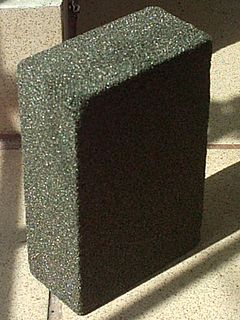 W
WFoam glass is a porous glass foam material. Its advantages as a building material include its light weight, high strength, and thermal and acoustic insulating properties. It is made by heating a mixture of crushed or granulated glass and a blowing agent such as carbon or limestone. Near the melting point of the glass, the blowing agent releases a gas, producing a foaming effect in the glass. After cooling the mixture hardens into a rigid material with gas-filled closed-cell pores comprising a large portion of its volume.
 W
WGeofoam is expanded polystyrene (EPS) or extruded polystyrene (XPS) manufactured into large lightweight blocks. The blocks vary in size but are often 2 m × 0.75 m × 0.75 m. The primary function of geofoam is to provide a lightweight void fill below a highway, bridge approach, embankment or parking lot. EPS Geofoam minimizes settlement on underground utilities. Geofoam is also used in much broader applications, including lightweight fill, green roof fill, compressible inclusions, thermal insulation, and drainage.
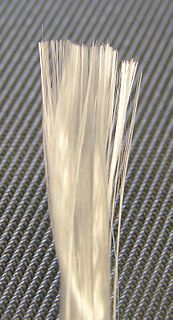 W
WGlass fiber is a material consisting of numerous extremely fine fibers of glass.
 W
WGlass wool is an insulating material made from fibres of glass arranged using a binder into a texture similar to wool. The process traps many small pockets of air between the glass, and these small air pockets result in high thermal insulation properties. Glass wool is produced in rolls or in slabs, with different thermal and mechanical properties. It may also be produced as a material that can be sprayed or applied in place, on the surface to be insulated. The modern method for producing glass wool was invented by Games Slayter while he was working at the Owens-Illinois Glass Co.. He first applied for a patent for a new process to make glass wool in 1933.
 W
WInsulating concrete form or insulated concrete form (ICF) is a system of formwork for reinforced concrete usually made with a rigid thermal insulation that stays in place as a permanent interior and exterior substrate for walls, floors, and roofs. The forms are interlocking modular units that are dry-stacked and filled with concrete. The units lock together somewhat like Lego bricks and create a form for the structural walls or floors of a building. ICF construction has become commonplace for both low rise commercial and high performance residential construction as more stringent energy efficiency and natural disaster resistant building codes are adopted.
 W
WMineral wool is any fibrous material formed by spinning or drawing molten mineral or rock materials such as slag and ceramics.
 W
WPolyisocyanurate, also referred to as PIR, polyiso, or ISO, is a thermoset plastic typically produced as a foam and used as rigid thermal insulation. The starting materials are similar to those used in polyurethane (PUR) except that the proportion of methylene diphenyl diisocyanate (MDI) is higher and a polyester-derived polyol is used in the reaction instead of a polyether polyol. The resulting chemical structure is significantly different, with the isocyanate groups on the MDI trimerising to form isocyanurate groups which the polyols link together, giving a complex polymeric structure.
 W
WPolystyrene (PS) is a synthetic aromatic hydrocarbon polymer made from the monomer known as styrene. Polystyrene can be solid or foamed. General-purpose polystyrene is clear, hard, and brittle. It is an inexpensive resin per unit weight. It is a poor barrier to oxygen and water vapour and has a relatively low melting point. Polystyrene is one of the most widely used plastics, the scale of its production being several million tonnes per year. Polystyrene can be naturally transparent, but can be coloured with colourants. Uses include protective packaging, containers, lids, bottles, trays, tumblers, disposable cutlery, in the making of models, and as an alternative material for phonograph records.
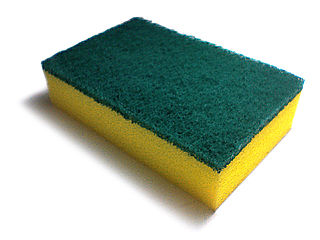 W
WPolyurethane is a commonly encountered polymer composed of organic units joined by carbamate (urethane) links. In contrast to other common polymers such as polyethylene and polystyrene, polyurethane is produced from a wide range of starting materials (monomers) and is therefore a class of polymers, rather than a distinct compound. This chemical variety allows for polyurethanes with very different physical properties, leading to an equally wide range of different applications including: rigid and flexible foams, varnishes and coatings, adhesives, electrical potting compounds, and fibres such as spandex and PUL. Of these, foams are the largest single application, accounting for 67% of all polyurethane produced in 2016.
 W
WQuadruple glazing is a type of insulated glazing comprising four glass panes, commonly equipped with low emissivity coating and insulating gases in the cavities between the glass panes. Quadruple glazing is a subset of multipane (multilayer) glazing systems. Multipane glazing with up to six panes is commercially available.
 W
WIn the context of construction, the R-value is a measure of how well a two-dimensional barrier, such as a layer of insulation, a window or a complete wall or ceiling, resists the conductive flow of heat. R-value is the temperature difference per unit of heat flux needed to sustain one unit of heat flux between the warmer surface and colder surface of a barrier under steady-state conditions.
 W
WA radiant barrier is a type of building material that reflects thermal radiation and reduces heat transfer. Because thermal energy is also transferred by conduction and convection, in addition radiation, radiant barriers are often supplemented with thermal insulation that slows down heat transfer by conduction or convection.
 W
WA radiator reflector is a thin sheet or foil applied to the wall behind, and closely spaced from, a domestic heating radiator. The intention is to reduce heat losses into the wall by reflecting radiant heat away from the wall. It is a form of radiant barrier and is intended to reduce energy losses and hence decrease fuel expenditure.
 W
WRigid panel insulation, also referred to as continuous insulation, can be made from foam plastics such as polyurethane (PUR), polyisocyanurate (PIR), and polystyrene, or from fibrous materials such as fiberglass, rock and slag wool. Rigid panel continuous insulation is often used to provide a thermal break in the building envelope, thus reducing thermal bridging.
 W
WA sandwich panel is any structure made of three layers: a low-density core, and a thin skin-layer bonded to each side. Sandwich panels are used in applications where a combination of high structural rigidity and low weight is required.
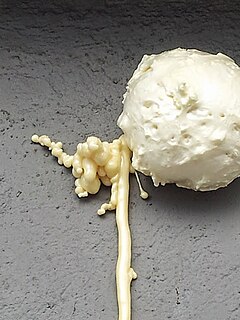 W
WSpray foam is a chemical product created by two materials, isocyanate and polyol resin, which react when mixed with each other and expand up to 30-60 times its liquid volume after it is sprayed in place. This expansion makes it useful as a specialty packing material which forms to the shape of the product being packaged and produces a high thermal insulating value with virtually no air infiltration.
 W
WStraw is an agricultural byproduct consisting of the dry stalks of cereal plants after the grain and chaff have been removed. It makes up about half of the yield of cereal crops such as barley, oats, rice, rye and wheat. It has a number of different uses, including fuel, livestock bedding and fodder, thatching and basket making.
 W
WA structural insulated panel, or structural insulating panel, (SIP), is a form of sandwich panel used in the construction industry.
 W
WStyrofoam is a trademarked brand of closed-cell extruded polystyrene foam (XPS), commonly called "Blue Board", manufactured as foam continuous building insulation board used in walls, roofs, and foundations as thermal insulation and water barrier. This material is light blue in color and is owned and manufactured by The Dow Chemical Company.
 W
WWool insulation is made from sheep wool fibres that are either mechanically held together or bonded using between 5% and 20% recycled polyester adhesive to form insulating batts, rolls and ropes. Some companies, like Wool.Life, do not use any adhesives or bonding agents, but rather entangle the wool fibers into in high R-Value, air capturing knops that hold themselves together. Natural wool insulation is effective for both thermal and acoustic insulation. The wool is often sourced from the less expensive black wools of the UK and Europe. Batts are commonly used in the walls and ceilings of timber-frame buildings, rolls can be cut to size for lofts, and ropes can be used between the logs in log homes. Wool knops are installed loosely in attics or in walls as a blow-in-blanket system utilizing a fiber mesh to hold the wool in place during the blow in process.